PANDORA
OR THE RETURN OF
THE AFRICAN CULTURAL ASSETS
Reason and results of the research for a performance
100 years after the end of German colonial rule in parts of Africa, a complex issue has come into focus that is likely to occupy not only the former colonial power Germany for decades to come. It is about the return of tens of thousands of art objects from the African continent that are exhibited and stored in European museums. Initiated by a current European discussion on the return of African cultural assets "exported" to Germany during the colonial period to their societies of origin, Paradise Garden has created a performance that makes a vivid contribution to the debate using the means of acting, video projections and live music, supplemented by interviews and audience discussions.
The aim was to draw the attention of a broad audience to this topic in contrast to scientific discussions. For this purpose, artists from Africa and Berlin were engaged. The results of the comprehensive research were to be presented on the stage of the Schlossplatztheater in Berlin-Köpenick at the end of March 2020.
The outbreak of the corona pandemic prevented the performance. In coordination with the Treptow-Köpenick District Office, Department of Culture and Museum, which supported and promoted the entire project, the intended contents are presented in this written but shortened form.
The initial situation
The individual perception and irritation about the ethnological museums in Germany filled with African cultural artefacts, with empty showcases in African countries at the same time, were the motivation to deal with this unequal distribution. The Savoy / Sarr - Report from 2017 on the return of just these objects to their countries of origin was ultimately the motivation for the artistic discussion of this topic.
After claims for restitution had already existed since the 1970s, which met with "passive resistance" (Snoep, 2020) from museums for years, this report set in motion an intensive examination of the provenance of the art objects in Germany as well:
Under what circumstances did they end up in the hands of foreign adventurers, businessmen, explorers, missionaries, or military personnel during the colonial era and finally in German museums?
Who are the descendants of the original owners?
Under what conditions must or can they be returned? Who should receive the art objects - the governments, ethnic groups or private descendants of the original owners?
Limitation of
a complex topic
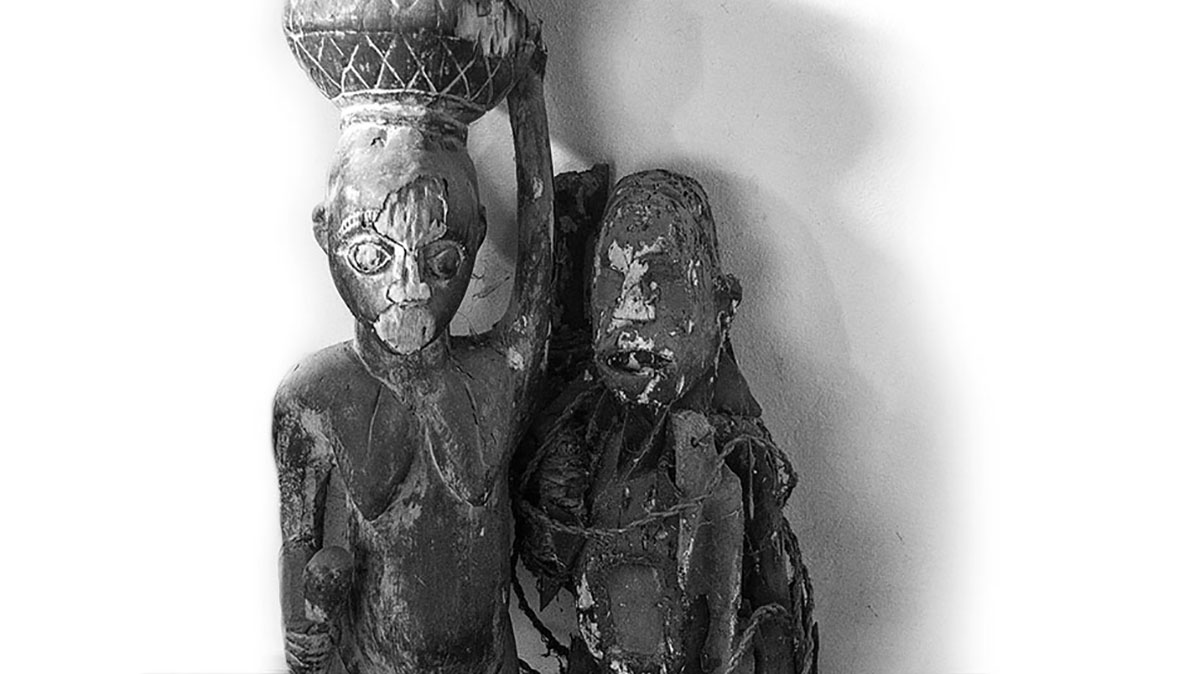
In the course of the intensive research it quickly became clear that the complexity of questions regarding the "acquisition" and return of the objects could not be dealt with in any approximate way in the context of this project. Accordingly, the field of conflict - if it was not to go beyond the scope of this project - had to be limited to a few aspects.
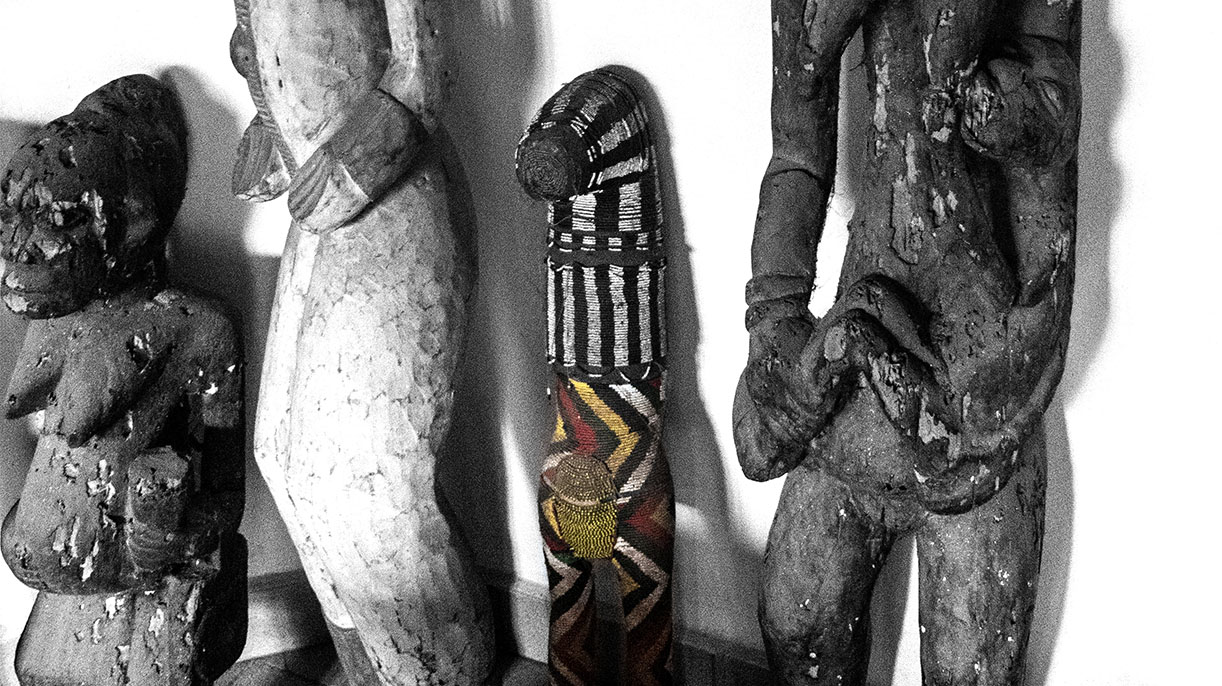
Thus, the work that has been makes no claim to be either complete or scientific. Three examples should illustrate the debate on questions of legal entitlement and the different views on restitution to the societies of origin.
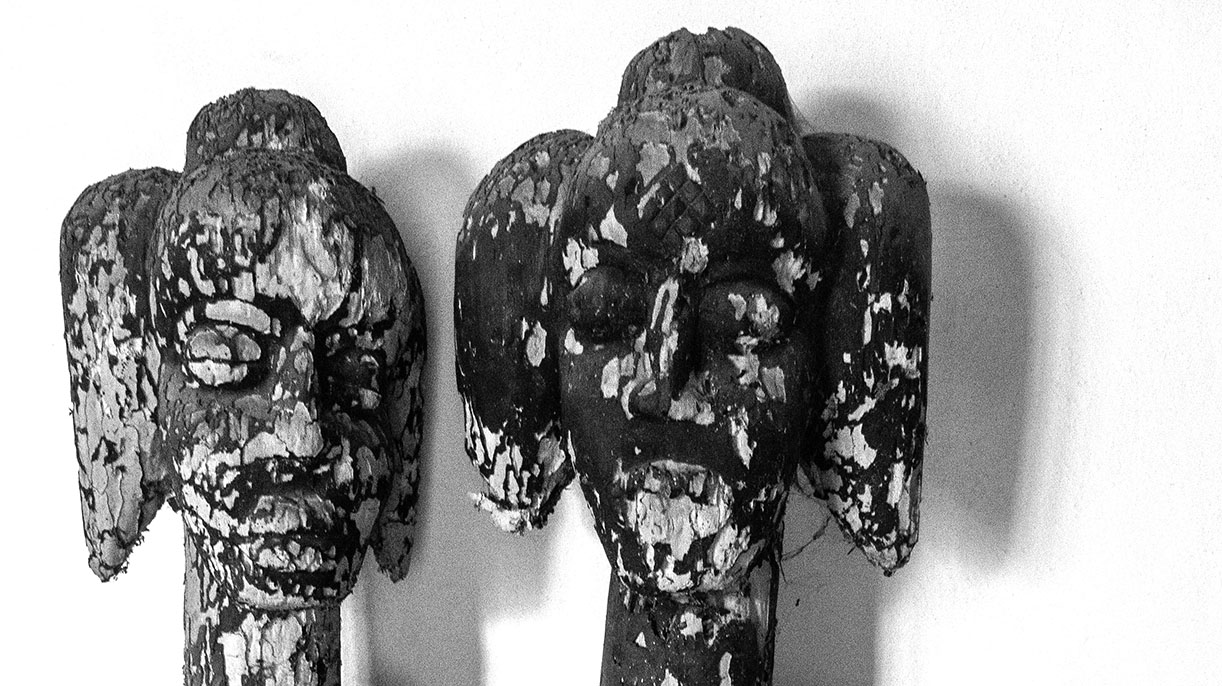
In addition, the question should be investigated as to what effects the loss of cultural heritage has had on African states and their populations to the present day. A brief overview of the history of European colonialism seemed necessary to provide an introduction to the topic.
European colonialism and
the role of Germany
500 years ago, the subjugation of large parts of the world to European rule began with the voyages of the Portuguese and Spanish. This marked the beginning of a constantly growing network of regions far apart from each other. The 20th century was marked by the peak of formal European colonial rule and its end after World War II from the 1950s to the 1970s.
With the end of the Cold War at the end of the 1980s, a rapid worldwide globalization began that rested on the "foundations of colonialism" (J. Zimmerer).
According to the historian Jürgen Osterhammel, ...
It culminated in two colonial wars: In southwest Africa (today's Namibia) up to 80% of the Herero and 50% of the Nama were killed, in East Africa (today's Tanzania) an estimated 250,000 Africans fell victim to a war of destruction led by the German side (commonly referred to as the Maji Maji Uprising). In the "defense" of East Africa in World War I, hundreds of thousands of Africans were killed once again.
The First World War marked the end of the short but still influential German colonial history. In the Peace of Versailles all " protected areas" were denied to Germany.
... Colonialism is a relationship of domination between groups of people, in which the fundamental decisions about the way of life of the colonized are enforced by a culturally different minority of colonial masters.
Colonialism is, among other things, characterized by Eurocentric ideologies such as the constructed "race theory" in which Europeans defined themselves as "civilized" and the population of Africa as "savages" (see Urs Bitterli, Die Wilden und die Zivilisierten, Munich 1976). The Europeans' sense of superiority derived from this justified land taking and exploitation.
Financed by domestic banks, Germans were already involved in the Europeans' early journeys to India or America and therefore in the beginning of the process of colonization. Germany did not formally appear as a colonial power until 1884, after the foundation of the German Empire in 1871. Private companies were placed under the "protection" of the Reich through so-called "protection contracts". Thus, the German Reich colonized militarily large parts of what is today Cameroon, Togo, German Southwest Africa, German East Africa but also the Chinese Kiautschou and in the Pacific e.g. Mariana Islands, Tonga, Papua New Guinea.
Other sales markets for industrial overproduction, new sources of raw materials, the threat of overpopulation and the desire for the status of a world power were the main reasons for this approach. Because of the conviction of their own superiority, they also saw their mission in having to cultivate the supposedly "retarded, primitive people"; colonization went hand in hand with Christianization. Not a few of the missionaries were ethnologists at the same time.
During the German colonial period between 1884 and 1914, the number of catalogued art objects in Berlin museums alone grew from 3,361 to 55,079. This strong growth leaves little room for interpretations other than theft or plunder by the colonial power.
The late appearance as a colonial power compared to Spain, Portugal, Belgium, the Netherlands, France or England led to the ambition to quickly make up for "missed opportunities" by acting efficiently. This led to sometimes vehement resistance against the colonial masters and was answered with brutal action by the colonial power.
The borders of the African states existing today are the results of colonization. They do not reflect the former pre-colonial power relations. Today's states are often dominated by ethnic groups that were favored by the colonial power. In this respect, the German colonial period has not only had a powerful impact in terms of political and economic aspects up to the present day.
"Colonialism is an injustice, and as long as one recognizes this, every acquisition has happened in a context of unequal power relations."
- Nanette Snoep, FAZ vom 04.03.2020
The term "thing”
Often the term "thing" is used instead of object, item or artifact.
It should be used as a neutral term in order to avoid interpretations or associations. Since Descartes, objects as passively given things have been contrasted with subjects as active perceivers in Western thinking. Objects are thus passively opposed to the recognizing subject. This is to be avoided with the term "thing". Since African cultural assets develop their meaning far beyond artistic interpretation, they are seen as constituted and constituent in the same way as the viewer. Thus, a continuous correlation between subject and object is given the necessary space.
The term "thing" will therefore be used in the further course.
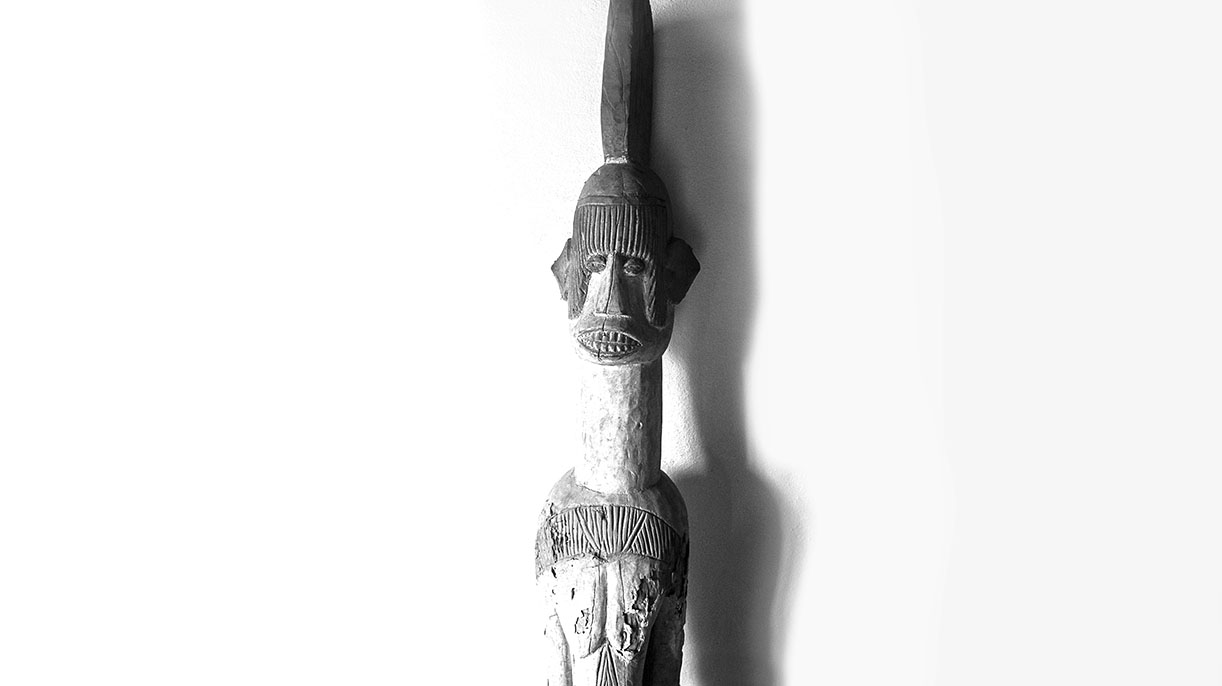
Example 1: Hendrik Witbooi
When the Bible and the whip of Hendrik Witbooi were returned to Namibia in February 2019 after 126 years by Theresia Bauer, Minister of Science in Baden-Württemberg, the entire political elite of the country had arrived. This presence underlines the great importance of "things" from colonial times for African states. This was preceded by negotiations over a period of six years.

Hendrik Witbooi around 1900 (retouched imagery, source: Wikipedia.org)
Who was Hendrik Witbooi that his Bible and his whip would receive so much attention? "Captain" Hendrik Witbooi was an important member of the Nama ethnic group during the German colonial period. His family had been among the leading members of this ethnic group for generations.
Both "things" - the Bible and the whip - are of great symbolic power in relation to Hendrik Witbooi, who is still revered as a national hero today. The Bible documents his conversion to the Christian faith and his initial cooperation with the Europeans. The whip is an expression of his authority within the Nama, but also externally in relation to the colonial administration Germany, which was later fought under his leadership.
The return of these "things" is not without controversy in Namibia. The cracks in the way symbolic "things" are dealt with have an impact not only on society as a whole, but also on the Nama ethnic groups and families.
The Nama and Herero societies partly mistrust the government from the Ovambos' majority ethnic group. This mistrust is based on the one hand on the fact that they were not involved in the negotiations and on the other hand on the fact that the negotiations on compensation for the genocide of the Nama and Herero, which has now been recognized by Germany, are not being seriously pursued from their perspective.
Beyond its symbolic value, this example strongly points to the political dimension of the negotiations on the return of "things" that have been "executed".
For Germany, especially for the state of Baden-Württemberg, however, the return after 126 years marks an important step on the path to reconciliation, one of the few completed returns ever.
Example 2: Head Kamea
This fictitious example is the head of Kamea "the First", a wooden bust from a West African country south of the Sahara. The described case is based on an existing comparable real "thing". The head of Kamea "of the First" was locally considered a sign of power and was taken as a war trophy during the German colonial period in 1885 by Fritz Mustermann, physician and deputy consul of the German Empire.
Afterwards he "donated" the "head" captured "by the German navy in combat" 1886 to the State Museum of Ethnology in Munich. There it has been kept, researched and presented to the public in exhibitions for almost 130 years.
The "Five Continents" Museum in Munich, as a state institution, considers itself the rightful owner of the "donation" by Fritz Mustermann. In contrast, Prince M. of the people "M", who sees himself as the inheritor, has been demanding the return of his grandfather's "royal insignia" since the 1990s. The prince and his supporters see the head of Kamea "the First" as a sacral "instrument" whose power is needed on site and can only develop there and not in a museum.
Prince M.'s claim for restitution was rejected in 1999 and 2010 by the Bavarian State Ministry of Education and Culture, Science and Art which is the responsible authority.
The military intervention of the Germans in the bust's place of origin must be described as a "slaughter", which was "concealed in most colonial historical descriptions". Thus, the claim for the return of the head of Kamea "the First" is embedded in a military acquisition context, which is documented both by the sources cited and by the museum documentation itself.
We see that the collecting of "things" in the colonial context also took place under conditions of violence such as military operations. The head of Kamea "the First" was captured during the first German colonial war between the German Reich and the local chief of the people of the "M".
The museum's defense against the restitution claim is based on the question of the legitimacy of the claim as well as doubts about the religious significance of the head. In addition, there is the formal objection that restitution is only negotiable between states and not with individuals. Finally, it is argued that the claim is a statute-barred legal claim.
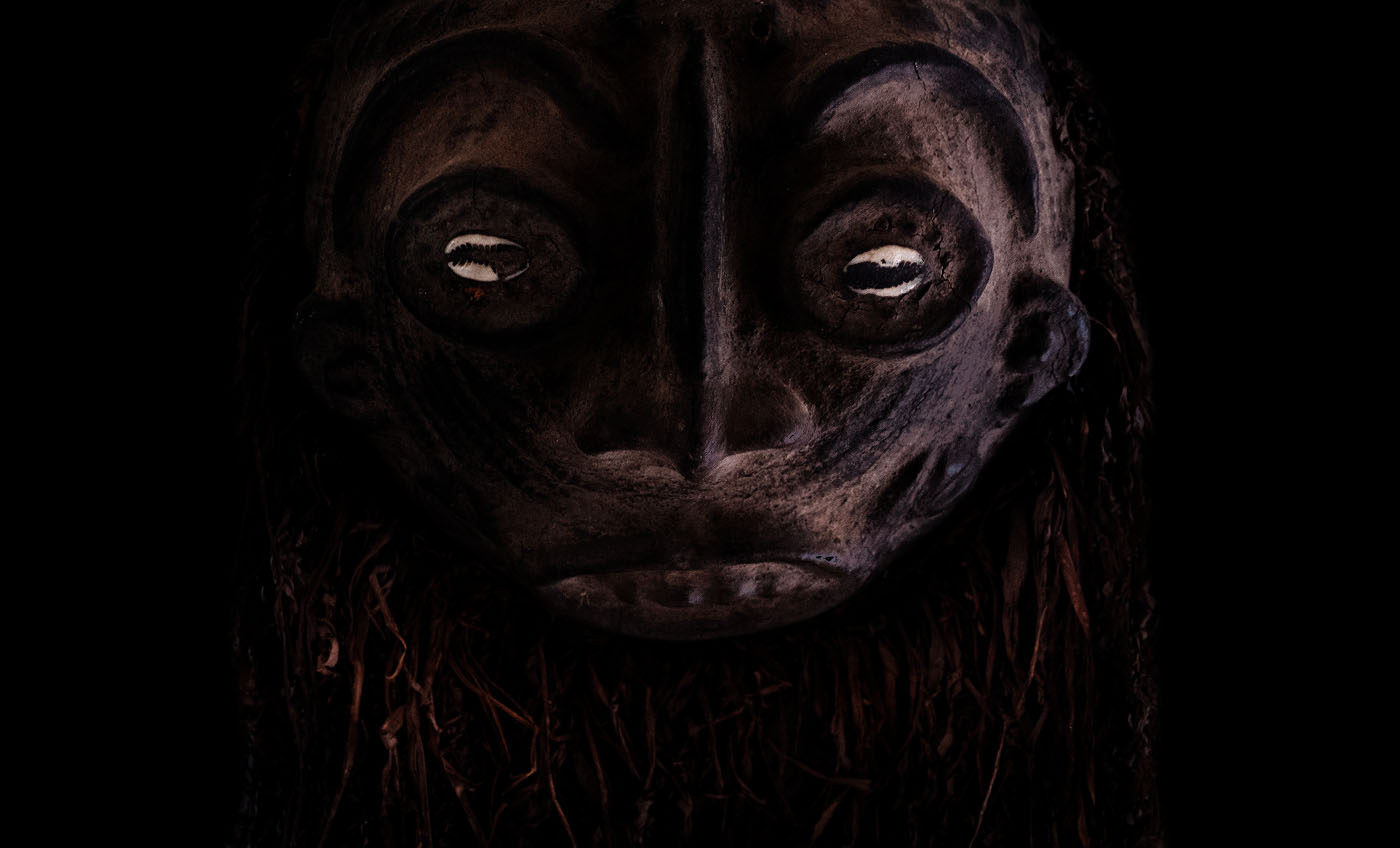
Example 3: Figure Ngonnso
The third example is a real case, the Ngonnso or bowl-carrying figure, a wooden standing figure covered with cowries which in Kumbo is considered to be the image or embodiment of the founders ancestor of the Nso' (ethnic group from Cameroon) which came to Berlin in 1902 by the Prussian officer Kurt von Pavel during the German colonial period under circumstances that can no longer be clearly clarified.
The Ethnological Museum Berlin as part of the "Foundation of Prussian Cultural Heritage - National Museums Berlin" considers itself the rightful owner of the "donation". The claim for the return of the legacy by his grandfather Seembum II (1875-1907) of the Fon of the Nso' (a Fon is the traditional and spiritual head) was rejected in 2011 in a letter written by the Vice President of the Stiftung Preußischer Kulturbesitz - Staatliche Museen Berlin which is the responsible institution.
In Kumbo and the surrounding area civil war is currently raging. The government in Cameroon does not support the restitution claim of the Fon. It is self-explanatory that no matter how one positions oneself, one "unintentionally" joins a conflict that is ultimately a direct result of colonial rule.
According to the heirs, the absence of the "thing" leads to discord, disaster and loss of life. Although the figure's path to Germany cannot be traced with certainty, the descendants assume that it was plundered. Due to the religious and spiritual significance of the figure, a donation by the society of origin is considered unlikely.
In this example, the treatment and placement of the figure in the country of origin associated with its return is cited as a reason for rejecting the claim:
Since it has been touched by so many "unholy hands", it must be rubbed with redwood flour and palm oil and kept in a private ritual room. Only in this way the power of the Ngosso can be reactivated. The figure is not intended for all eyes. Because of the rituals and sacrifices associated with it, Ngonnso cannot be exhibited in a museum.
The Berlin museum is not willing to return the statue under these conditions and offers it on loan instead.
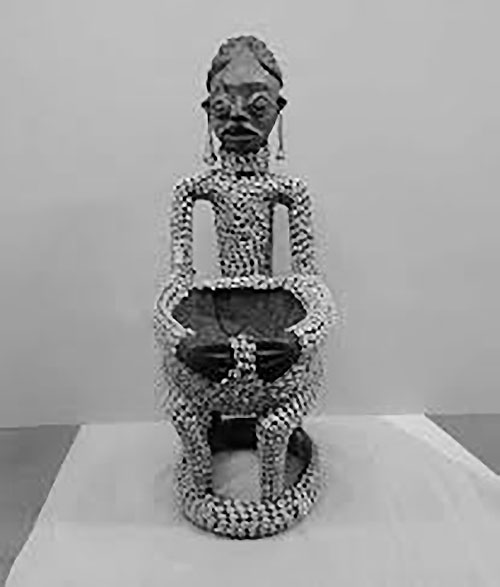
Conclusions
The production of the three examples for the performance in the Köpenicker Theater was intended to illustrate the different ways in which German museums deal with restitution claims. The different perspectives on "things" were worked out: On the one hand, the classification as a work of African art, as a cultural world heritage, which is presented to the public in the museum and as an object of research. In the countries of origin (in our examples the former German colonies Namibia and Cameroon) the "things" have a deeply rooted cultural and spiritual meaning beyond their artistic value. In most cases, this goes far beyond the museum's valuation.
But there are also doubts about the evaluation of certain "things" beyond their artistic value and thus the assumption that this is only cited to help individual representatives of the affected societies to achieve their particular interests. There is also the question of whether the cultic meaning of "things" could still be realized today as it was 120 years ago. The cultic-religious dimension is also no longer the same today in the societies of origin as it was then. It becomes clear that on the one hand there is an artistic-ethnographic dimension, on the other hand there is a religious-spiritual and therefore very different actors.
The widely divergent view of "things" is one reason for lengthy and fruitless negotiations, if they take place at all.
From the perspective of the societies of origin, the transport of their "things" to Germany or Europe is further evidence of the plundering of the continent. As long as no consensual decisions are reached here, the relationship between African and European societies will remain disrupted. With the term "relationship ethics" in the title of their work, Savoy and Sarr explicitly emphasize the relevance of this disruption of relations.
The following further aspects have emerged from their research. If different interpretations of restitution claims already exist in German museums, what is the situation in Europe? Doesn't the once again different handling of the looted, plundered, given things represent an almost insurmountable obstacle for a constructive debate? In the Netherlands for example, "things" that are important to the countries of origin can be returned. The aim should be to achieve a common position on this issue among all European former colonial countries. At the same time, we believe that - supported by provenance research and in dialogue with the society of origin - individual decisions should be made from "thing" to "thing". The decision should rest with the societies of origin.
The majority of the African population today is under 20 years of age and has no access or connection to the "things" that were taken out of the country more than 100 years ago.
Under these circumstances, is it not necessary to strengthen the development of a culture of remembering in the countries affected without causing tensions between different ethnic groups?
Herman Parzinger, President of the Prussian Cultural Heritage Foundation, sees one reason why the discussion about the problem of acquiring the collections did not find its way out of the museums into the public eye for so long: "On the one hand, through the crimes of National Socialism, on the other hand, through the short German colonial period, which was nevertheless immensely cruel. History has caught up with us." (Parzinger, FAZ from 04.03.2020)
For Nanette Snoep, curator, Dutch anthropologist and cultural manager, the debate on colonialism represents a huge opportunity for museums. "Ten years ago, nobody was interested in ethnological museums. Dahlem was empty. The ethnological museums are exactly the place where the process of reconciliation can take place. Perhaps the great frustration comes from the fact that the voices of the societies of origin have not been heard for so long because the museum teams are not diverse enough. (Snoep, FAZ from 04.03.2020)
Further aspects, in conclusion of research,
seem important to us:
The "things" from the African societies of origin also have a financial value on the art market. Especially "things" that are discussed in public and that have gained "visibility" through exhibitions receive an increase in value. The return of these "things" thus also means a loss of financial possession. When one realizes that hundreds of thousands of "things" are stored in German museums, it becomes clear that the restitution debate is also a question of the unbalanced distribution of capital.
A process that has already begun and that must be further advanced is that the inventories of the archives are digitized and made freely accessible. This is an essential condition for the societies of origin to be able to find out where which of their objects are stored.
Provenance research must be further promoted and financially supported and the results must be made visible in the exhibition context. One example seems to be the newly curated Africa Museum in Tervuren near Brussels. The director of the museum, Guido Gryseels, decided "wherever he could, to engage in critical dialogue by half imposing, not removing or locking away. You cannot change history," he says, "you can only explain it."
The question of restitution is another aspect of colonial relations. When it comes to whether nation states, private individuals or societies of origin should get "things" back, one must be aware that there are sometimes conflicts between them. In any case, representatives of the former colonial power would make a decision in favor of one side or the other in a current conflict, which would practically mean that there would again be an interference that could be used by the losing side to further intensify the conflict.
Returns should be used - with the participation of all societies concerned - for apologies and reparations for the mistakes of the colonial period, and there must be a broader debate in Europe and in the countries of origin to better illuminate the various dimensions of art, culture and religion.
In order to further address the still existing asymmetric relations between the former colonial powers and their "former" colonies and to initiate a permanent debate about the causes of today's conflicts, unjust axes of power, the North/South imbalance, the return of African "things" can and should serve as a medium on both sides.
STATUE DREAMS
By Juvenil Assomo (Author of "past,present, future Kamerun")
In the name of the voice of my rebellious silence
In the name of my wordless death buried on the derm of my destiny
A holy day the sun on the pantheon of an amazing smile
This bunch of radiance that begets genius
A holy night day going to slumber
To fertilize the most beautiful jewels of our ebony striped goddesses
Maternate the most terrific masks that sweep our worries
The eyes blossomed with gold
Glancing our revered statues
Perched on the thrones
Blessed by the magic vows of our manes
Blacksmith
Forge of Treasure
Forge clever son of my blood
A metal for our delirious passions which taunt the spit of Bismarck and its colonial choir
Forge of Forces
Forge pretty iron weaver
The arrows and amulets that shall sing on the battlefield
The praises of the millennial totem
–––––––––––––––––
I am already dead
All this time lacerated in this touristic jail for the curious
All these strangers who fondle me with admiration
Chewing the pleasure of their domination
RAPE
They raped me
They have ... where are you justice?
They eye me yes they eyed me: Oh a piece of bronze!
They palpated me ocean of shame They palpate me: Exotic African wow!
Relic of their murderous heroes who fiddled with the breasts of Africa to wring its millennial milk
Horror
I am not a Negro artwork which fertilizes a Negro art
My name
Illegal immigrant
Yes I am the most beautiful slave of their tears and their hurrahs of Versailles
I am sentenced to life
Buried in a luxuriant cage
A little sound to break the chains of my silence
These couplets that murmur my dis-exhibition
Time
In the morning of my dreams I see
I see from the bottom of my handcuffed silence
From the abyss of my simmered death
Patiently gripped by the deaf tears of my drunk land
Earth I still remember
Joy Pain and trance of Torments
I still remember
Your scent
Scent of peace
Scent of joie de vivre
Scent of wisdom and bravery
The multicolored dances in my Africa
The mean stares of the Kings of my jewel-case continent
Scent
See you macerated in the flames of their mad ambitions
Terrified amongst the trampled bodies
Raped
Robed
Cargoes crumbling under the despair of your wealth who cried who cried who are crying
–––––––––––––––––
These prophetic choruses that rustle around me
These media and clever lunatics who sing and chant my liberation
Free the condemned for life! Let her go back to her cowards
Don't cry for me
It has been a long time since my life has slammed the door.
They stole my destiny
Precious rubbish that decorates the Berlin wind
That flows in the Seine of Paris
That parades on the envies of Buckingham
Don't cry anymore for my worth
Show me to the sea-tears from my Africa
Where are their tears?
Where are the tears-family?
Free the condemned for life, let her go back to her cowards
Will I still recognize the piece of nostalgia where my umbilical cord sleeps badly?
Will they recognize me?
Will they come and lull me?
Singing together
As Afo Akom “the prodigy is back”?
Always my insane despair
Facing the orgy of my peacefully impotent Africa-pistol
Soaked in the tears of her oppressed journey
From the hell of Gorée to the mayday trumpets of He’ro-Nama
From emptied pride of Lock Priso to the whitened beaches of Swakopmund
Deaf
I hear souls whining to offer a little melody to deaf-mutes
Tears
I see the sky shining and withering on the head of my darling disarray
Sea
I murder my hopes cursing the waves which shape urbi and orbi the face of my romantic clearance in the manors of the great
Lord!
Been so long
Tired of waiting their sweating love voices
Long time ago that I fade in these trunks
That the fate has misled me
Oh life has dropped me to relish with handsome politico and collectors
–––––––––––––––––
Gathering our tam-tam hearts so that together we can knead a new Africa with our sweat
So that united in forgiveness I breathe into them everything that a museum life has taught me
Hooooomeeeee, Where do I go when I can’t go oo Home?
World
It has been so long since my life has slammed the door
So let me become a star
I am no longer the pride of the Rhine
I am no longer the complaint of the Sahara
I am just
A sober star
A little memory drooling with the desire to write a new dream on the lips of the world
I am...
A griot
I want
To tell the story of a future world in all the languages of the world
All…
Before the midnight of my StatueDreams
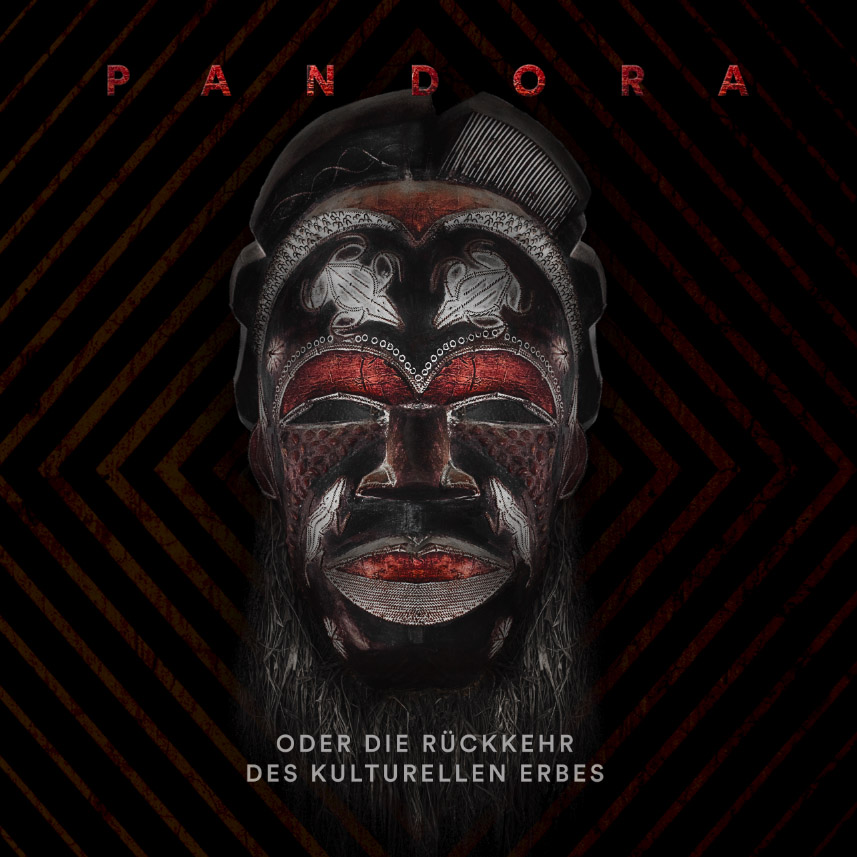
Research sources
Intensive research was conducted between October 2019 and March 2020. The content and dramaturgy of the event is based on the following sources:
- Felwine Sarr / Bénédicte Savoy: The restitution of African cultural heritage. On the way to a new relationship ethic.
- Research Ethnology Museum Herrnhut
- Discussion with the research assistants Julia Binter and Kristin Weber-Sinn from the Ethnological Museum Berlin Dahlem
- Evaluation Press: FAZ 4.3.20 (Interview Parzinger/ Snoep) Paul Ingendaay, Belgium bloody heritage, FAZ of 23.07.2020 and others
- Research Press: Return of the Witbooi Bible and whip. Source: www.dw.com
- Interviews of Landry Nguetsa in Yaounde with Dr. Loumped & Dr. Bingono Bingono from Cameroon
Research: Public hearing of the Bundestag Committee for Culture and Media on April 3, 2019. source: youtube.com
Research: Felwine Sarr & Bénédicte Savoy on the restitution of African cultural assets. Source: youtube.com
Research: Colonizing the Divine: Shiynyuy Semaiy Gad. Source: youtube.com
Work meeting: Christian Kopp "Berlin Postcolonial”
Work meeting: Shiynyuy Gad (representative of the Nso)
Email traffic: FU Manuela Bauche
Jürgen Zimmerer, Expansion and Rule: History of European and German Colonialism
Anne Splettstößer, Controversial Collections - On the handling of colonial heritage from Cameroon in ethnological museums. Examples 2 and 3, as well as the "thing" definition are taken from the work of Anne Splettstößer.
E-mail correspondence with Uwe Jung and Eckehard Fricke.
Text selection and text editing Frank Kegler and Jens Vilela Neumann. Berlin Summer 2020.
Kindly supported by the district authority Treptow-Köpenick of Berlin,
Office for Further Education and Culture